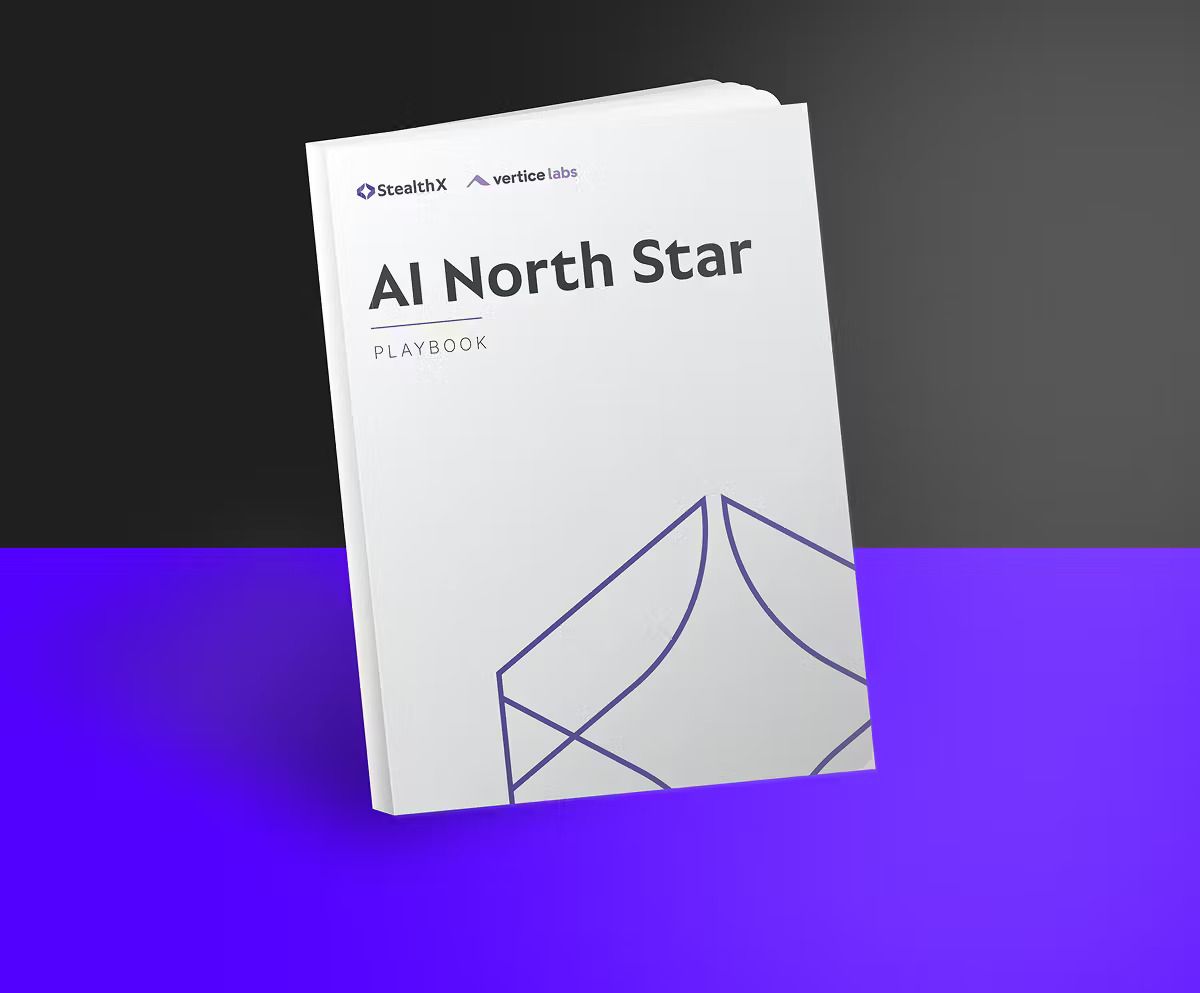
The world isn’t waiting for perfect conditions, and neither are the best teams. While others hesitate, top-performing teams are testing, refining, killing, and scaling faster than anyone else. They're leveraging tools and technology that others are too slow (or too scared) to try.
At StealthX, we’ve built a structured but lightweight approach to rapidly experimenting with tools. This isn’t about chasing shiny objects. It’s about moving fast, cutting what doesn’t work, and ensuring that new technology actually drives impact.
Here’s how we think about rapid tool experimentation. I thought it might be helpful to share for other leaders who are trying to figure out how their teams might incorporate emerging tech into their workflows in 2025.
In the spirit of building in the open, this is an evolving process and will 100% continue to change as things accelerate. We'll continue to share updates as we modify/iterate.
Important disclaimer:
In all of our tool testing, we do not using any proprietary or customer data. We're very protective of all client info to make sure they're safe. I'd encourage you to do the same 😉
1. Find tools worth testing. No red tape.
Most teams slow themselves down with bureaucracy before they even get started. Endless approval loops and IT reviews kill momentum before an experiment even begins. At StealthX, we're removing friction by enabling anyone to suggest and test a new tool as long as it fits within a simple framework:
Does it solve a real pain point?
Will it improve efficiency or quality of work?
Can we test it immediately without major operational risk?
If a tool meets these criteria, we don’t waste time. Someone grabs the company AMEX, signs up, and logs it in our Radar (our internal tracking system in Notion). No waiting months for a decision.
Putting this into action:
Create a low-friction process for employees to test tools without bottlenecks.
Set clear parameters for what qualifies a tool for testing (e.g., it must solve a real problem and be easy to implement).
Encourage a culture of curiosity where employees actively seek out innovations.
2. Put the tool to work immediately. No sandbox testing.
The biggest mistake teams make is keeping new tools in a controlled test environment for too long. Instead of playing with a tool in a sandbox, we immediately use it in a real project.
For example, if someone finds a tool that can help us generate a bunch of ideas quickly to vet/validate, they use it on actual project that week. If a documentation tool looks promising, we apply it to a live project rather than testing in isolation.
This approach ensures that:
We don’t waste time on theoretical tests that don’t reflect real workflows.
We get real feedback on how well a tool integrates into daily work.
If a tool doesn’t work, we know within days. Not months.
Putting this into action:
Deploy new tools in real-world projects immediately.
Get hands-on feedback from users within the first week of testing.
Create a process where users document their experience so the team learns collectively.
3. Review, kill, or scale. No wasted budget.
Every Friday, our team holds a 30-minute innovation jam where we review tools and ideas tested that week. The conversation is simple:
Does it work? If it saved time, improved quality, or streamlined a process, we scale it to other team members.
Does it suck? If the tool didn’t deliver, it’s canceled immediately to prevent unnecessary spending.
Did we learn something? Even if a tool fails, we document what we learned so we don’t repeat the same experiment in the future.
This discipline prevents tool creep where companies collect unnecessary software subscriptions that no one actually uses.
Putting this into action:
Set a recurring (and quick) review session to assess new tools.
Make fast decisions. Don’t keep mediocre tools around “just in case.”
Keep a record of failed tools and why they didn’t work to refine future selections.
4. Keep budgets tight. Only pay for what actually delivers value.
It’s easy for teams to accumulate tech costs without realizing it. One $30/month tool turns into 10, then 20, and suddenly, there’s a bloated $5,000/month software bill. We prevent this by capping our monthly AI experimentation budget and requiring tools to earn their way into our long-term stack.
If a tool proves valuable, it moves into a recurring budget line.
If it doesn’t justify its cost, it’s gone. No debate.
We track every tool in our Radar to maintain visibility over subscriptions.
This approach ensures we spend on impact, not convenience.
Putting this into action:
Set a cap on your experimentation budget to encourage disciplined spending.
Regularly audit all tool subscriptions and remove anything that doesn’t deliver measurable value.
Require clear justification before moving any tool into a long-term stack.
5. Create a culture of AI-first thinking.
This is bigger than just testing tools. It’s about changing how people think. Right now, we’re at a moment in history where AI is revolutionizing workflows, but most professionals still default to traditional methods.
A metaphor I've been using a lot lately is from 15 years ago when Amazon was in crazy growth mode. Often my wife and I would drive to the store, grab what we needed, and head to the checkout. While in line it would hit us, "I bet Amazon has this... 🤦♂️"
Right now, a lot of people are still driving to the store (i.e., doing their normal workflow) instead of ordering from Amazon (i.e., using emerging tools) when it comes to using AI.
At StealthX, I'm really focused on making it our first instinct to think to use AI first. Some examples:
When summarizing meeting notes, we take meeting transcripts from Otter, refine with ChatGPT, and store them in Notion. Then we use Notion AI to easily reference past meetings and have a robust team knowledge hub.
When a deck or document is needed, we've been quickly testing tools like Beautiful.ai or Gamma.app to see what they generate before building from scratch.
When tackling a repetitive process, we look for automation options before manually grinding through it.
This mindset shift compounds efficiency over time. I believe that the teams that adopt AI-first thinking NOW will be years ahead of those who don’t.
Putting this into action:
Train your team to always ask: “Can AI help with this?” before starting any task.
Provide easy access to AI tools so employees feel empowered to experiment.
Reward team members who find high-impact AI-driven efficiencies.
Wrapping Up
The best teams in 2025 won’t be waiting for perfect conditions. They’ll be testing, learning, and adapting at speed.
At StealthX, we’ve built a system that allows us to move fast while staying disciplined:
No red tape blocking tool adoption.
Real-world testing from day one.
A ruthless review process that eliminates inefficiencies.
A strict budget to prevent tech bloat.
An AI-first mindset that maximizes speed and innovation.
I'm absolutely 100% convinced that leaders who are building rapid experimentation into their team/company culture right now will win in the long run. Those who hesitate will get left behind.
How is your team approaching tool experimentation in 2025? I’d love to compare notes. Hit reply and let me know.
Onward & upward,
Drew
SPECIAL OFFER
AI North Star Playbook
In case you missed it, I co-authored the AI North Star Playbook to help make sure leaders are solving the most impactful business problems with AI. This playbook will help you:
Focus efforts on solving challenges that will drive the most value.
Build a shared vision & roadmap to unite everyone around clear goals for AI.
Move from strategy to execution with speed.
It’s free and available on the StealthX site. Click the link and fill out the form below to get a copy 😊
Also, we’re printing some copies and giving them away to leaders in Charlotte. If you’re interested in a print copy - reply and let me know.

